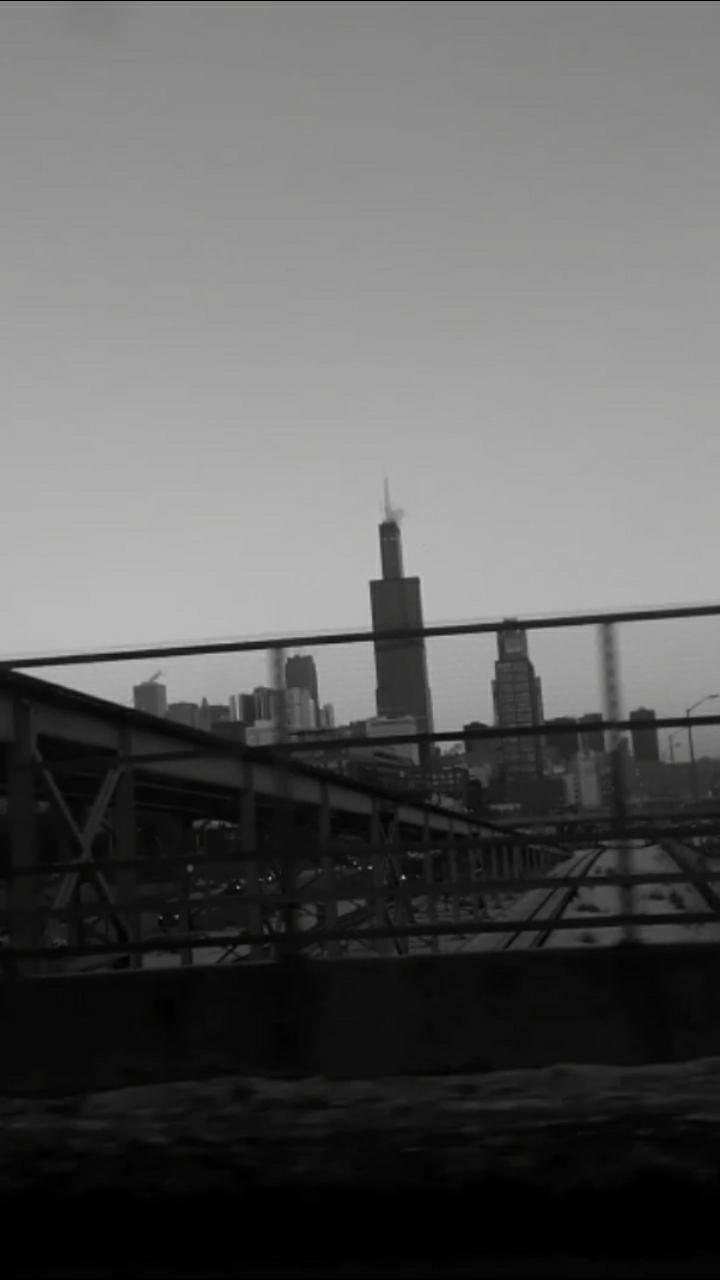Here, we are looking at a portion of the Chicago skyline from Ashland Avenue. “The image—as a necessary simplification of the city reflects this unique experience. The language people use about places provides a valuable insight into this personal experience, and the image may be studied through their descriptions. It is through these descriptions of places that stereotypes have the greatest potential for development”(Burgess 1974). When people hear “Chicago” they picture our beautiful skyline or the stigma associated with the city, but rarely both simultaneously. This photo being black and white leaves the readers to make sense of what they see Chicago as based off of their personal experiences.
Personally, I love the city, the food, the accessibility of everything and more. However, I also dislike aspects of it. Chicago can be very odd at times, but the stigma associated with it isn’t prevalent everywhere. For example, it’s a place that gets really hot or cold. One neighborhood can be safe and the next one brings unease. It’s a segregated melting pot. “'Stereotypes appear to be learned by word of mouth or from books and films. The media creates a vast cultural matrix in which images can develop and persist irrespective of the reality they are supposed to represent'”(Karlins, Coffman and Walters, 1969)( As cited in Burgess 1974).
Mass media is powerful. Likely, it can influence its audience on how to portray Chicago. As a result, it'll reinforce the stereotypes. Focusing on violence led to coining the term “Chiraq” because of how media depicts Chicago's gun violence. However, police say that compared to last year, “Chicago saw nearly a 16% decline in murders, according to statistics”(Park 2018), but not many people are aware of that because the media only portrays the “chiraq” aspects of it.
Not only does the city have a stigma, but so do Chicagoans. From a conflict theory perspective, people’s social interactions are always about power. On “Urbanism as a Way of Life,” Louis Wirth states, “In particular, urban residents are more tolerant than rural residents of nontraditional attitudes, behaviors, and lifestyles, in part because they are much more exposed than rural residents to these nontraditional ways”(as cited in “Social Problems”). Media’s power makes their depiction realistic about Chicagoans as violent when, in fact, they’re more open-minded, yet still complex.
Through an ethnographic method we see that “audiences, then, are constituted as a discrete site of meaning-making, as they decode the significance of the mass media that they encounter in their everyday lives. It’s possible by bringing their own knowledges and understandings to bear on the products of the media”(Rose 259).
Ultimately, it is up to the audience to decide what they believe or not. There isn’t much of either just “good” or “bad” things. Chicago is not always “black or white”, rather a mixture of both perspectives. Some people may be more limited than others if, for instance, one has never visited Chicago and/or only has knowledge coming from only mass media.
References
[Author removed at request of original publisher].(2016, March 25). Social Problems:
Continuity and Change. Retrieved January 22, 2018, from http://open.lib.umn.edu/socialproblems/chapter/14-2-sociological-perspectives-on-urbanization/
Burgess, J. (1974). Stereotypes and Urban Images. Area, 6(3), 167-171.
Park, M. (2018, January 01). Chicago Police Count Fewer Murders in 2017, but 650 People
Were Killed. Retrieved January 22, 2018, from
http://www.cnn.com/2018/01/01/us/chicago-murders-2017-statistics/index.html
Rose, G. 2016. Visual Methodologies: An Introduction to Researching with Visual
Methods, 4th ed. Sage.
Sturken, M. and Cartwright, L. 2018. Practices of Looking: An Introduction to Visual
Culture, 3rd ed. Oxford.

Commentary on Rachel Tanur's Works: Guatemalan Mother and Child